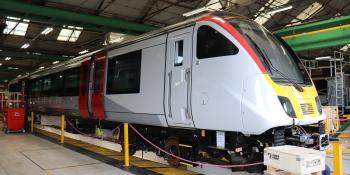THE DEPARTMENT for Transport paid £2.28 billion to train operators in England between 1 March and 27 June, according to data released by the Department in late July.

The data covers Period 13, the last four-week period, of 2019-20, and the first three periods (12 weeks) of 2020-21. Although most franchises have been operating under Emergency Measures Agreements (EMAs) since March (these were backdated to 1 March), the amount also includes LNER and Northern’s operations, both of which are already funded directly through DfT as they are run by the Operator of Last Resort, and therefore are not subject to EMAs.
The highest payment over the period was made to Govia Thameslink Railway (£367.4 million), followed by Great Western Railway (£303.8 million), although the latter’s payment in Period 13 of 2019-20 was not made under EMA terms. Both the Northern and South Western franchises received payments from the Department in excess of £200 million.
The majority of EMAs run out on 20 September, with reports suggesting their replacement will be a modified version entitled an Emergency Recovery Management Agreement (ERMA – p8, last month).
TOCs IN THE PUBLIC SECTOR
Implementation of EMAs in place of traditional franchise agreements at the onset of the Covid crisis has led the Office of National Statistics to reclassify train operating companies (TOCs) in England and Scotland to the public sector.
The ONS announced in July that it was reviewing the status of TOCs on contracts let by the UK and Scottish Governments and confirmed the reclassification on 31 July. The Transport for Wales franchise, let by the Welsh Government, was not mentioned in the reclassification announcement.
Explaining the decision, the ONS notes the amendment of normal franchise mechanisms and the transfer of ‘almost all revenue and cost risk to the government’. TOCs have also had restrictions placed on their ability to borrow money and cannot make significant changes to fares or staffing levels without government agreement. ONS says this has led it to conclude that public sector control exists over them and that, in accordance with international statistical guidelines, they should be classified as public non-financial corporations with effect from 1 April 2020. ONS says it will review the classification status of operators again if the EMAs are amended of expire. It adds that the classification status is a statistical matter which does not have any direct implications in areas such as ownership, legal status or management structure.




